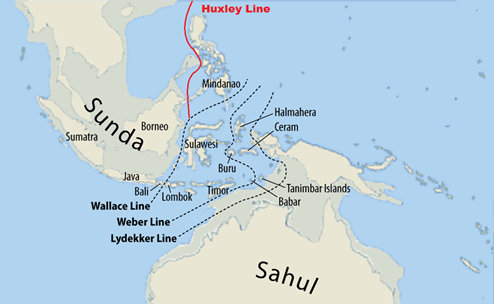PREVIOUS
Wallace Line in Biodiversity
March 8 , 2025
43 days
304
0
- In the late 19th century, the English naturalist Alfred Russel Wallace had noticed a dramatic shift in the composition of the organisms as he moved from Asia to Australia, New Guinea, and other islands nearby.
- He posited an invisible barrier in the ocean, later called the Wallace line.
- It was running between the islands of Bali and Lombok, striking north between Borneo and Sulawesi before curving south of Mindanao.
- According to him, this line was like a fence between the different kinds of animals on the two sides.
- West of the Wallace Line consists of monkeys, apes, rhinos, squirrels, tigers, and hornbills, which are characteristic of the Asian ecosystem.
- East of the Wallace Line includes the tree kangaroos, cockatoos, and honeyeaters, linked to the Australian ecosystem.
- The region between the Wallace Line and the Weber Line is known as Wallacea.
- This Isolated Wallacean islands have lower biodiversity than nearby continents and host unique species like the Komodo dragon, babirusa, and giant bees.

Leave a Reply
Your Comment is awaiting moderation.


